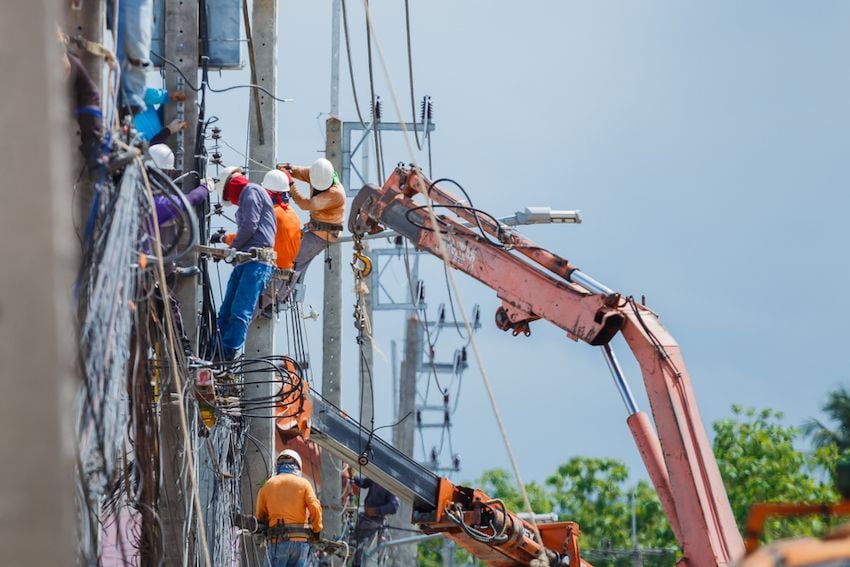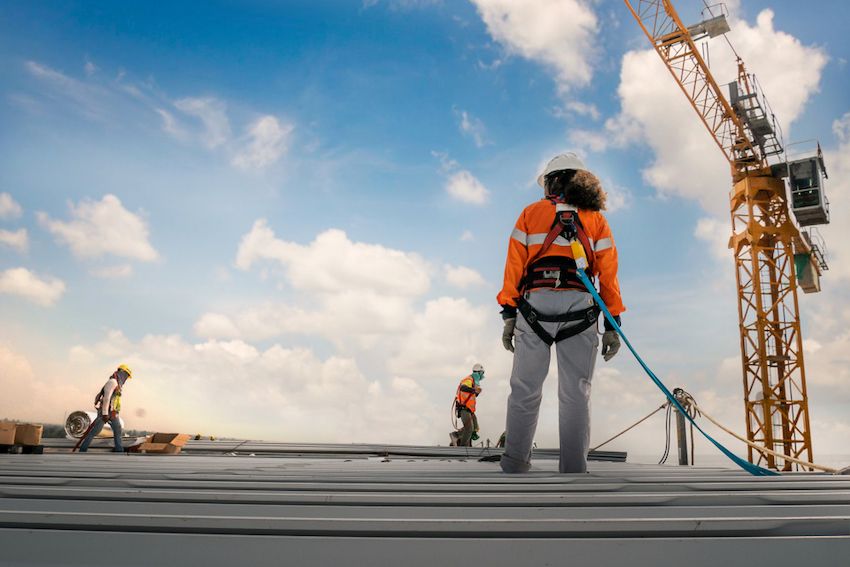According to the Bureau of Labor Statistics (BLS), a worker sustained a fatal injury every 99 minutes from a job-related incident in 2019. That same year, private industry employers reported 2.8 cases of workplace injuries and illnesses per 100 full-time equivalent workers, according to the BLS.
Some people see these numbers and think it’s up to health and safety leaders to create and implement better safety measures to protect workers. It’s true company leaders play a vital role in worker safety, but what some people don’t realize is that creating a safe, healthy working environment doesn’t only depend on people with “safety” in their job titles.
The fact is that safety is everyone’s responsibility. Accidents happen when the entire team doesn’t work together to create and maintain strict practices—and hold each other accountable for adhering to them. We explore this concept further here, discussing the different roles company employees play in protecting workers from injuries and fatalities.
4 groups that impact worker safety
1. Executive team
The CEO and top executives are usually far removed from the dangers of the field, but, to best protect workers, safety should always be among their top priorities. This is because the executive team approves funding for safety initiatives.
But, an executive's role in ensuring a safe workplace should extend beyond that of a banker. They should also make a point to act out the company’s safety culture. An executive who gets out of the office and into the field for a worksite audit or who attends union meetings to hear directly from workers is one who makes it clear that they take worker safety seriously.
Safety managers need the support of the executive team to succeed. Without a clear commitment to safety at the top, safety initiatives are bound to fail among lower-level employees.
Related: 7 Ways to be More Proactive About Worker Safety
2. Safety managers
Safety managers play a huge role in workers’ overall wellbeing. The executive team oversees worker safety matters, but professionals in a safety management position are tasked with actually creating and implementing protocols.
Some of the duties associated with this type of job include conducting safety meetings, audits, and inspections to make sure rules are being followed; that best processes are in place; and that protocols meet industry, local, state, and federal guidelines. They also organize safety training, manage environmental safety and health programs, and work with senior management to create an Emergency Action Plan.
These professionals serve as a point person for all safety-related activities. Their job revolves around minimizing safety risk and serious injuries, but they can’t do it all themselves. As mentioned above, they need the support of the CEO and the rest of the C-suite. They also need the assistance of middle management and employees themselves.
Check out: 7 Characteristics of Great Safety Leaders
3. Direct supervisors
Since they’re on the front lines, supervisors and managers play a critical role in worker safety. They’re responsible for ensuring workers follow protocols, including the usage of proper personal protective equipment and adhering to the organization’s safety rules and regulations.
Direct supervisors also serve as an intermediary between executives and workers. For example, they might be tasked with informing workers of a potential safety hazard on a new job site or giving senior management feedback on safety practices recently put in place.
As an everyday presence in workers’ lives, direct supervisors lead by example. Therefore, they inadvertently have a huge impact on safety compliance levels. If they adhere to the company’s safety protocols, workers will be much more likely to follow suit. However, if they don’t take the rules seriously, workers will also consider them optional, which will likely cause the organization’s safety incident rate to increase.
Consequently, it’s important to choose the right people to manage teams. Employees with a spotty safety record should never be promoted to this type of role, and outside candidates must be carefully vetted to ensure their commitment to safety.
4. Frontline workers
They might not make the rules, but workers have a serious impact on the company’s safety record. As the people actually doing the work, they play a huge role in keeping themselves safe on the job.
Failing to take measures like wearing suitable PPE, operating equipment properly, attending training sessions—including those deemed voluntary—and reporting workplace hazards or OSHA violations puts themselves and their colleagues at a serious safety risk. Ultimately, no matter how strict a company’s safety program is, it won’t be effective if people don’t follow the rules.
Supervisors can’t monitor workers for every second of their shift. If people are determined to sidestep protocols put in place for their safety, they’ll find a way to do so under the radar—until a safety incident occurs.
Ultimately, safety management protocols won’t be effective unless workers want to follow them. If people won’t take responsibility for their own safety, it’s hard for anyone else to keep serious injuries at bay.
Worker safety is a top priority at your company, but it can’t just be the responsibility of one person or team. In reality, all it takes is one employee who refuses to follow the rules to create a serious safety hazard—or even cause a fatal injury.
Therefore, ensuring every single person at the company is held accountable for safety is a must. People need to understand their role in keeping safety incidents at the organization to a minimum, so they take adherence seriously.
Up next: Create a Safety-First Culture to Prevent Worker Safety Incidents

